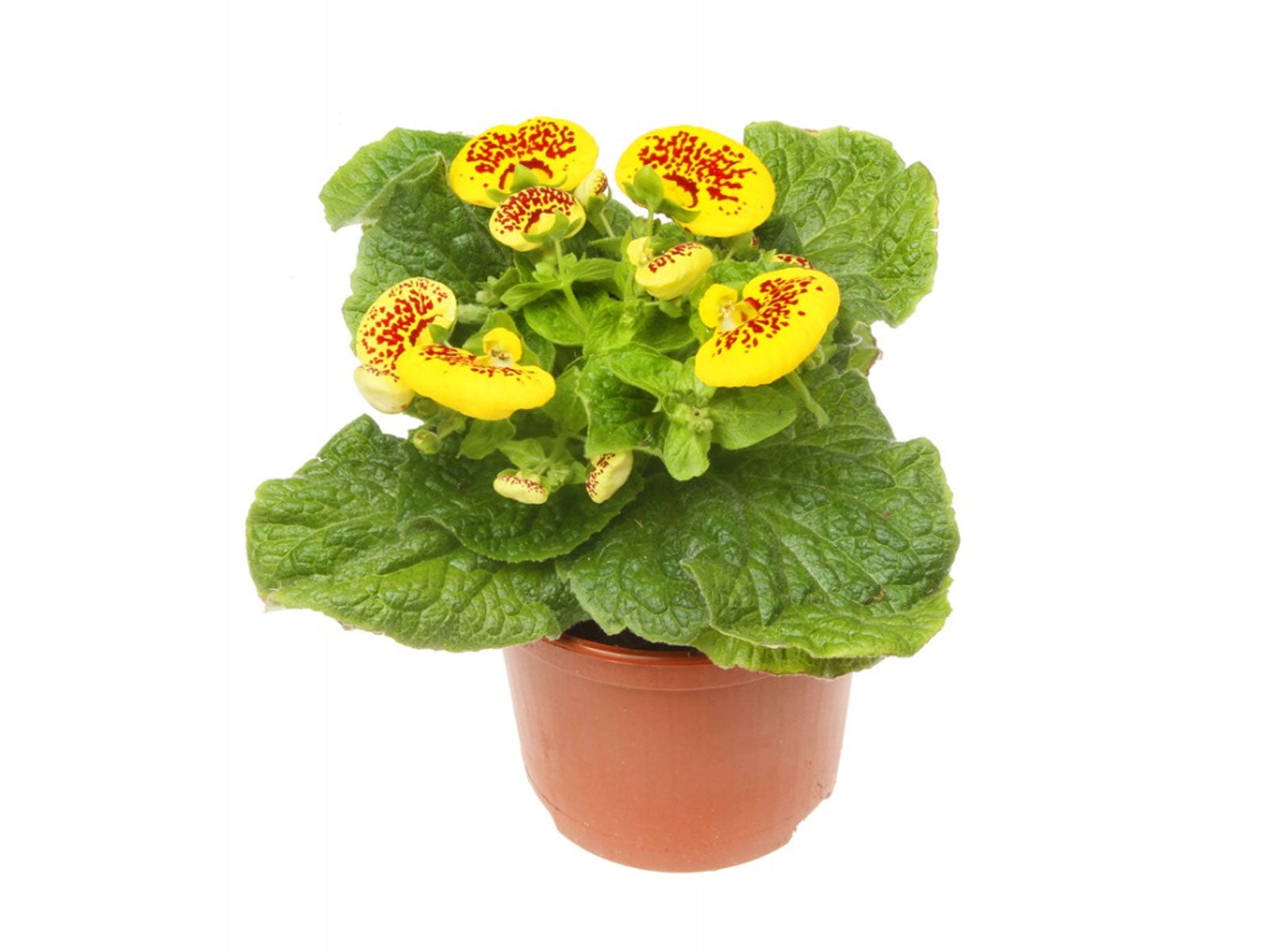Calceolaria Houseplants: Tips On Growing Pocketbook Plants

Calceolaria's nickname -- pocketbook plant -- is well chosen. The flowers on this annual plant have pouches at the bottom which resemble pocketbooks, purses or even slippers. You'll find Calceolaria houseplants for sale in garden centers from Valentine's Day until the end of April in the United States. Growing pocketbook plants isn't very complicated as long as you remember that they like their environment cool and not too bright.
How to Grow Calceolaria Indoors
While this annual can be grown both indoors and out, the most popular use may be as a potted houseplant. Once you look into the native environment for this bright flower, you'll know how to grow Calceolaria. It comes from Central and South America in the cooler plains areas where water and bright sunlight aren't so abundant. Pocketbook plant care works best when you try to imitate its native home. Keep the plant near a bright window, but out of direct sunlight. If your only window is on a bright southern exposure, hang a sheer curtain between the plant and outdoors to filter the brightest rays. Northern windows and tables away from the light source are more hospitable for these plants. Pocketbook plant care includes carefully monitoring the water supply. These plants don't do well with too much moisture on their roots. Give the plants a thorough watering, then let the pots drain in the sink for about 10 minutes. Allow the soil to dry out until the surface is dry before watering again. Although pocketbook plant is a tender perennial, it's grown as an annual. Once the flowers die off, you won't be able to make a new batch appear. It's better to simply enjoy these unusual flowers while they look good, then add them to the compost pile when they begin to dry up and wilt.
Pocketbook Plant Care Outdoors
Although pocketbook plant is most often grown as a houseplant, it can be used as a bedding plant outdoors. This smaller plant can grow up to 10 inches (25.5 cm.) tall, so place it near the front of the flower beds. Amend the soil with a good amount of compost to aid in drainage, and place the plants about a foot (30.4 cm.) apart. Grow these plants early in the spring, when the night temperatures hover around 55 to 65 F. (13-18 C.). When the summer heat arrives, pull them and replace them with a more heat-resistant plant.
Gardening tips, videos, info and more delivered right to your inbox!
Sign up for the Gardening Know How newsletter today and receive a free copy of our e-book "How to Grow Delicious Tomatoes".
-
 Zinnias On Repeat: 10 Glorious Cut-And-Come-Again Varieties For Endless Summer Bouquets
Zinnias On Repeat: 10 Glorious Cut-And-Come-Again Varieties For Endless Summer BouquetsThese zinnia varieties keep giving all summer, making them the perfect choice for dedicated cutting gardens – or just the occasional homegrown bouquet.
By Ellen Wells
-
 Create A Romantic Garden Straight Out Of Bridgerton: Regency Era Romance In Your Garden
Create A Romantic Garden Straight Out Of Bridgerton: Regency Era Romance In Your GardenTry some romantic garden ideas straight out of Bridgerton. Flowers and gardens in the Regency era were lush and charming and you can get the same look!
By Bonnie L. Grant